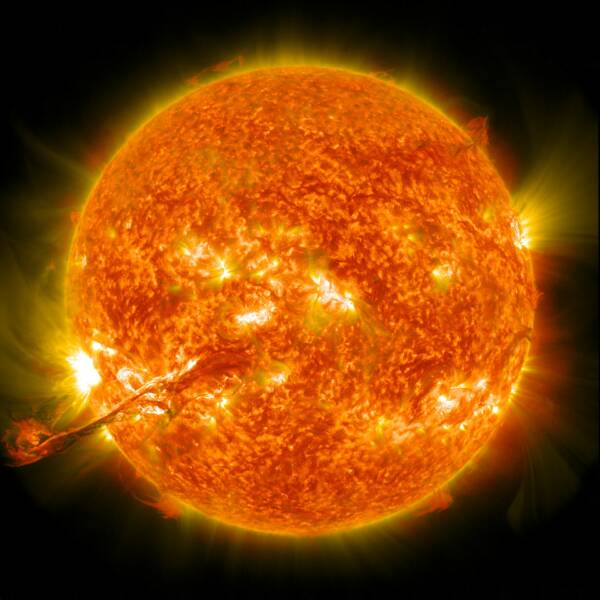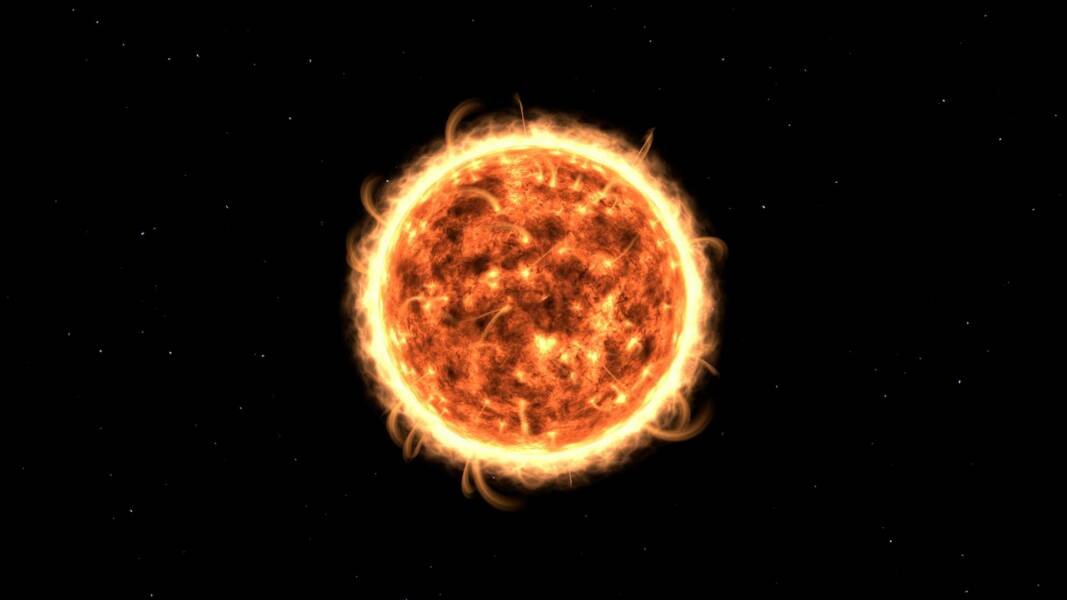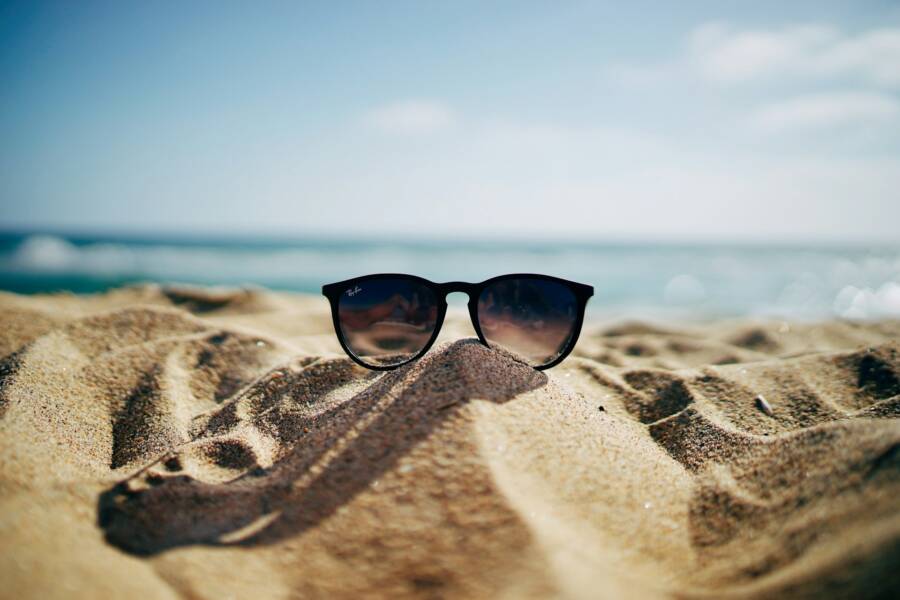Contrary to what many think, the star does not burn like a bonfire here on Earth. For there to be fire, free atmospheric oxygen is needed, an abundant element on our planet, where it makes up 21% of the atmosphere. In contrast, space, known for its almost absolute vacuum, contains tiny amounts of oxygen, insufficient for any type of combustion, as explained by the European Space Agency (ESA).

Combustion on our planet
As an example, we can use the process of a piece of paper which, when set on fire by a match, starts a process in which the atoms in the Paper, which contains a significant amount of carbon, hydrogen, and oxygen, undergoes a reaction with oxygen present in the atmosphere. This interaction results in the formation of carbon dioxide and water, while simultaneously releasing energy in the form of heat and light. This encounter produces carbon dioxide and water, releasing energy in the form of heat and light. This process is known as combustion.
So what causes the Sun to burn endlessly?
The Sun functions through a distinct process known as nuclear fusion, which takes place independently of the requirement for oxygen. In the solar core, where the temperature reaches 15 million degrees Celsius and the pressure is extraordinarily high, hydrogen atoms fuse to create helium.
During this remarkable procedure, the Sun converts 700 million tons of hydrogen into 695 million tons of helium per second, emitting energy in the shape of gamma rays that are ultimately transformed into the light and heat we receive.
In other words, the Sun radiates light and heat not because it “burns” like a bonfire, but through nuclear reactions that occur under extreme conditions of temperature and pressure.
But if space is almost empty, how does solar heat reach us?
The warmth experienced on Earth is not a direct transmission of solar thermal energy, but rather a transmission of solar radiation. This radiation, which encompasses visible light and other wavelengths of the electromagnetic spectrum, passes through the vacuum of space and, interacting with particles in our atmosphere, is converted into the heat we feel.

Although the Sun has used up about half of its hydrogen reserves during its 4.5 billion years of existence, it still has enough “fuel” to continue shining for another few billion years. This process of nuclear fusion is not only vital for the production of its energy, but it also explains why the Sun does not need oxygen to “burn”.
So the next time you watch the Sun glow and feel the heat, remember that you are witnessing an incredible nuclear reaction underway, a cosmic spectacle of atoms producing the illumination and warmth necessary for the existence of life on Earth.
Essential Tips for Sun Protection
The solar, whereas being the first supply of life-sustaining vitality on Earth, additionally emits ultraviolet (UV) radiation that may pose vital well being dangers. Extended publicity to UV rays can result in pores and skin most cancers, untimely growing older, and eye harm. As such, defending your self from the solar’s dangerous results is essential. Listed here are a number of efficient methods that will help you keep secure underneath the solar.
1. Put on Sunscreen Each day
Probably the most efficient methods to guard your pores and skin from UV harm is to make use of sunscreen frequently. Select a broad-spectrum sunscreen with an SPF of at the very least 30, which protects towards each UVA and UVB rays. Apply it generously to all uncovered pores and skin quarter-hour earlier than going outside, and reapply each two hours or instantly after swimming or sweating. Don’t neglect often-missed spots just like the ears, again of the neck, and tops of the ft.
2. Seek Shade During Peak Hours
The solar’s rays are strongest between 10 a.m. and 4 p.m. If attainable, restrict your outside actions throughout these hours. If you’ll want to be outdoors, search shade underneath timber, umbrellas, or canopies. Shade can considerably cut back UV publicity, although it’s nonetheless important to make use of sunscreen as UV rays will be mirrored off surfaces akin to water, sand, and concrete.
3. Put on Protecting Clothes
Clothes can present a bodily barrier towards UV rays. Go for long-sleeved shirts, lengthy pants, and skirts produced from tightly woven materials. Some clothes is particularly designed for solar safety and is labeled with an ultraviolet safety issue (UPF) ranking. The next UPF ranking signifies higher safety. Darker colours usually supply extra UV safety than lighter colours.
4. Accessorize with Hats and Sunglasses
A large-brimmed hat can present shade to your face, neck, and ears. Select hats produced from tightly woven materials akin to canvas. Straw hats are much less efficient as a result of they typically have holes that permit daylight by. Moreover, put on sunglasses that block 100% of UVA and UVB rays to guard your eyes and the encompassing pores and skin. Wrap-around kinds are notably efficient as they forestall UV rays from coming into from the edges.
5. Use UV-Blocking Window Film
In the event you spend a variety of time driving or sitting close to windows, take into account putting in UV-blocking window movie. These movies can block as much as 99% of UV rays, offering extra safety once you’re indoors or in a car. Common glass home windows sometimes block UVB rays however not UVA rays, which might penetrate deeper into the pores and skin.
6. Be Cautious with Reflective Surfaces
Sure surfaces, akin to water, sand, snow, and concrete, can mirror UV rays and improve publicity. Even on cloudy days or whereas underneath an umbrella, mirrored rays can attain you. It’s important to take additional precautions in these environments by utilizing sunscreen and carrying protecting clothes and niknaks.
7. Keep Knowledgeable Concerning the UV Index
The UV Index is a every day forecast that signifies the energy of photo voltaic UV radiation on a scale from 1 (low) to 11+ (extraordinarily excessive). Examine the UV Index in your space to gauge the extent of solar safety wanted every day. On days when the UV Index is excessive, take additional precautions to guard your pores and skin and eyes.
8. Preserve a Healthy Pores and skin Care Routine
After spending time within the solar, deal with your pores and skin by utilizing mild cleansers and moisturizers to assuage any irritation. Hydrate your pores and skin frequently and think about using merchandise that include antioxidants to assist restore any harm attributable to UV publicity.
9. Educate and Lead by Instance
Unfold consciousness in regards to the significance of solar safety to household and mates, particularly kids, who’re extra susceptible to UV harm. Encourage sun-safe behaviors and lead by instance to assist create a tradition of solar security in your community.

Ingrid Maldine is a business writer, editor and management consultant with extensive experience writing and consulting for both start-ups and long established companies. She has ten years management and leadership experience gained at BSkyB in London and Viva Travel Guides in Quito, Ecuador, giving her a depth of insight into innovation in international business. With an MBA from the University of Hull and many years of experience running her own business consultancy, Ingrid’s background allows her to connect with a diverse range of clients, including cutting edge technology and web-based start-ups but also multinationals in need of assistance. Ingrid has played a defining role in shaping organizational strategy for a wide range of different organizations, including for-profit, NGOs and charities. Ingrid has also served on the Board of Directors for the South American Explorers Club in Quito, Ecuador.




